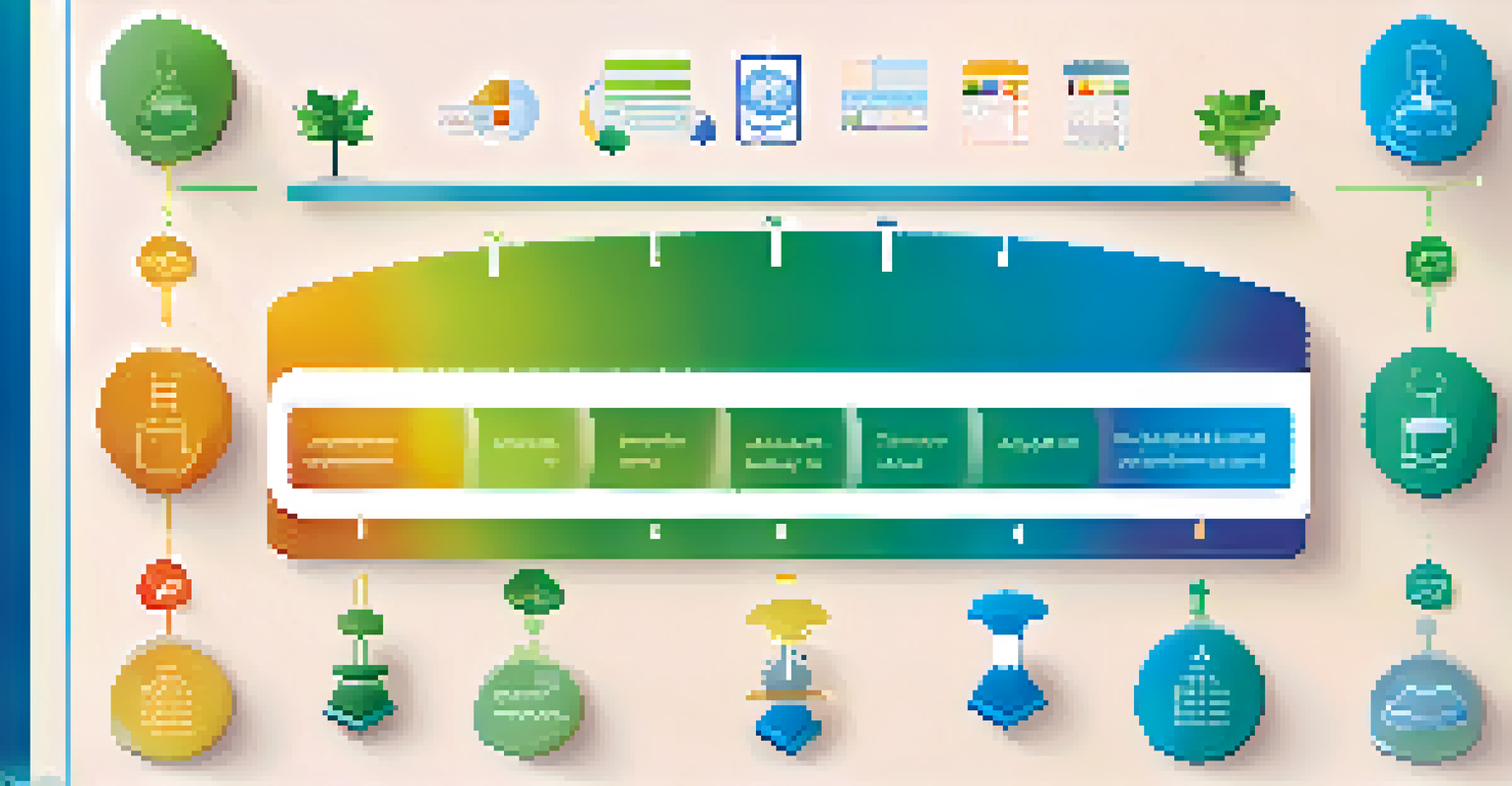Formative vs. Summative Assessment: Key Differences Explained

Defining Formative Assessment: An Ongoing Process
Formative assessment is like a GPS for learning, guiding students along their educational journey. It occurs during the learning process and provides continuous feedback, helping educators understand where students stand. Think of it as a series of check-ins that allow teachers to adjust their strategies to meet student needs effectively.
Assessment is not about testing; it's about learning.
Examples of formative assessments include quizzes, discussions, and projects that occur throughout a unit. These tools enable instructors to monitor progress and identify areas where students may struggle. Ultimately, formative assessment aims to enhance learning by making it an interactive and responsive experience.
The key takeaway is that formative assessments are about growth, not grades. They focus on improving student understanding and skills rather than simply evaluating their performance at a single point in time.
Understanding Summative Assessment: The Final Evaluation
Summative assessment, on the other hand, is like the final exam at the end of a road trip. It measures what students have learned over a specific period, usually at the end of a unit or course. This type of assessment typically takes the form of tests, final projects, or standardized assessments.

The goal of summative assessments is to evaluate student learning and determine whether educational goals have been met. For instance, a final exam may assess a student’s comprehension of an entire semester’s worth of material. This evaluation often carries significant weight in determining grades and future educational opportunities.
Formative Assessment Guides Learning
Formative assessment acts as a GPS for students, providing ongoing feedback and support throughout their educational journey.
While summative assessments provide a snapshot of student achievement, they do not offer the same level of feedback as formative assessments. They are retrospective, focusing on what students have learned rather than how they can improve.
Key Differences: Purpose and Timing
The primary difference between formative and summative assessments lies in their purpose and timing. Formative assessments are designed to inform instruction and support student learning as it happens, while summative assessments evaluate what students have learned after instruction is complete. This distinction is crucial for educators in understanding when to use each type effectively.
The greatest sign of success for a teacher is to be able to say, 'The children are now working as if I did not exist.'
Another key difference is the timing of these assessments. Formative assessments occur throughout the learning process, offering regular feedback, while summative assessments are typically conducted at the end of a unit or course. This timing influences the way both students and teachers approach learning and evaluation.
Understanding these differences can help educators make informed decisions about assessment strategies and improve student outcomes. By balancing both types of assessments, teachers can create a more comprehensive evaluation system.
Impact on Student Learning and Motivation
Formative assessments can have a significant positive impact on student motivation. By providing ongoing feedback, students feel more engaged and supported in their learning journey. This encouragement can lead to increased effort and a growth mindset, where students view challenges as opportunities for improvement.
In contrast, summative assessments can sometimes create anxiety, as they often carry high stakes. When students focus solely on final evaluations, they may feel pressured to perform well, which can detract from their intrinsic motivation to learn. This pressure can hinder their ability to demonstrate their true capabilities.
Summative Assessment Measures Success
Summative assessments evaluate what students have learned at the end of a course, giving a snapshot of their overall understanding.
Ultimately, educators should strive to create a balanced assessment approach that incorporates both formative and summative assessments. This balance can help foster a supportive learning environment while also preparing students for more formal evaluations.
Examples of Formative Assessment Techniques
There are numerous effective techniques for conducting formative assessments. For instance, think-pair-share is a simple strategy where students reflect on a question, discuss their thoughts with a partner, and then share with the class. This encourages collaboration and helps teachers gauge understanding in real-time.
Another technique is using exit tickets, which are quick assessments completed at the end of a class. Students write down what they learned or questions they still have, providing valuable insights for teachers. These methods encourage active participation and ensure that learning is truly taking place.
By incorporating various formative assessment techniques, educators can create an engaging learning environment that adapts to student needs. This approach not only enhances student understanding but also builds a stronger classroom community.
Examples of Summative Assessment Approaches
When it comes to summative assessments, there are several common approaches educators can use. Traditional methods include final exams and standardized tests, which assess students' knowledge at the end of a unit or course. These assessments often focus on recalling information rather than applying it.
Projects and presentations are another effective form of summative assessment. They allow students to demonstrate their understanding in a creative way while showcasing their skills. For instance, a science project can assess a student's grasp of scientific concepts and their ability to communicate findings.
Balance Enhances Learning Experience
Striking a balance between formative and summative assessments creates a comprehensive evaluation system that fosters student growth.
By diversifying summative assessments, educators can better evaluate student learning and provide a more comprehensive picture of their progress. This variety can also reduce stress and encourage students to engage meaningfully with the material.
Balancing Formative and Summative Assessments for Success
To optimize student learning, it's essential to strike a balance between formative and summative assessments. Formative assessments provide the ongoing feedback necessary for improvement, while summative assessments help gauge overall understanding. Together, they create a holistic approach to education.
Educators can use formative assessments to inform their teaching, making adjustments based on student performance. At the same time, summative assessments can offer insights into the effectiveness of instruction. This iterative process promotes continuous improvement for both students and teachers.

By embracing both types of assessments, educators can create a more enriching learning experience. This not only supports student growth but also prepares them for the challenges they will face in their academic journeys and beyond.